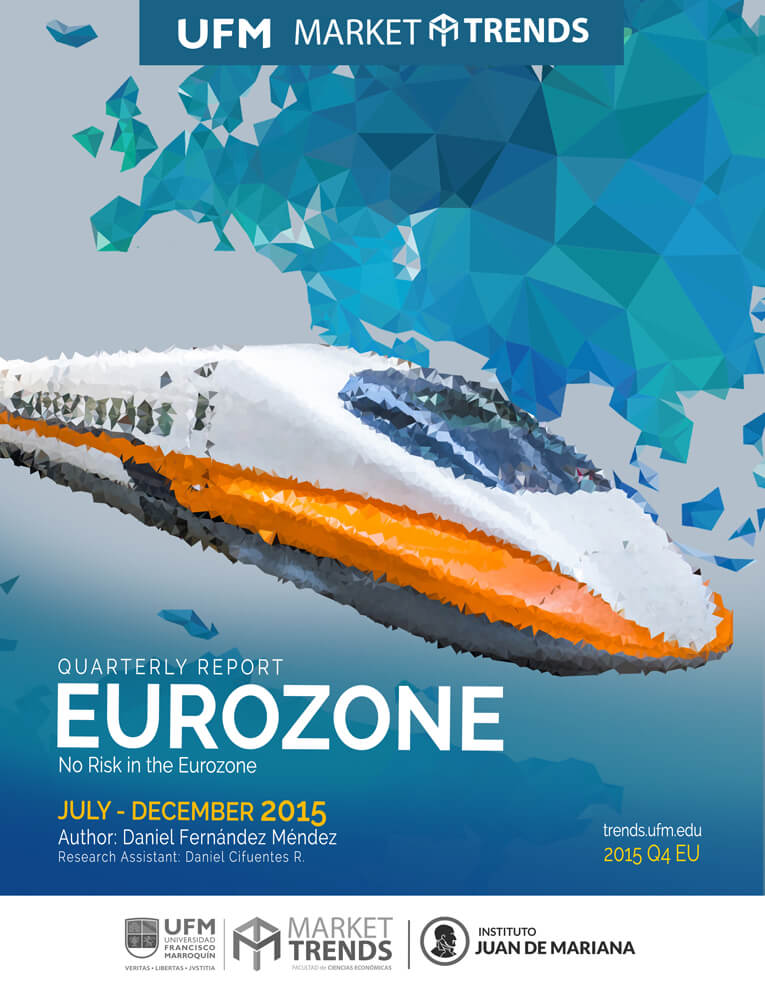Rise in lending activity. Business and household credit is rising, public sector credit is decreasing. The Eurozone could be facing a negative expulsion effect.
Liquidity gap and credit quality indicators are stable without any signals of risk in the sector. Credit restrictions are not expected in the near future.
Rise in lending activity. Business and household credit is rising, public sector credit is decreasing. The Eurozone could be facing a negative expulsion effect.
Liquidity gap and credit quality indicators are stable without any signals of risk in the sector. Credit restrictions are not expected in the near future.
GDP growth has been superior to the annual 1% for 5 consecutive quarters, although still below potential growth rate. Credit increments are expected to positively influence economic growth. There is job creation.
The monetary base is increasing at an accelerated pace since the European Central Bank implemented Quantitative Easing. The most modest increment of monetary aggregates. Limited interference in consumer prices and none in production prices.
Fiscal consolidation is starting to show results, GDP debt is under 2%, total debt has stopped growing. If this trend continues, there could be reductions of total debt for 2016.
Great surplus in current account (3% GDP), allowing the Eurozone to rapidly reduce its international debtor position that comes from past credit excesses.



